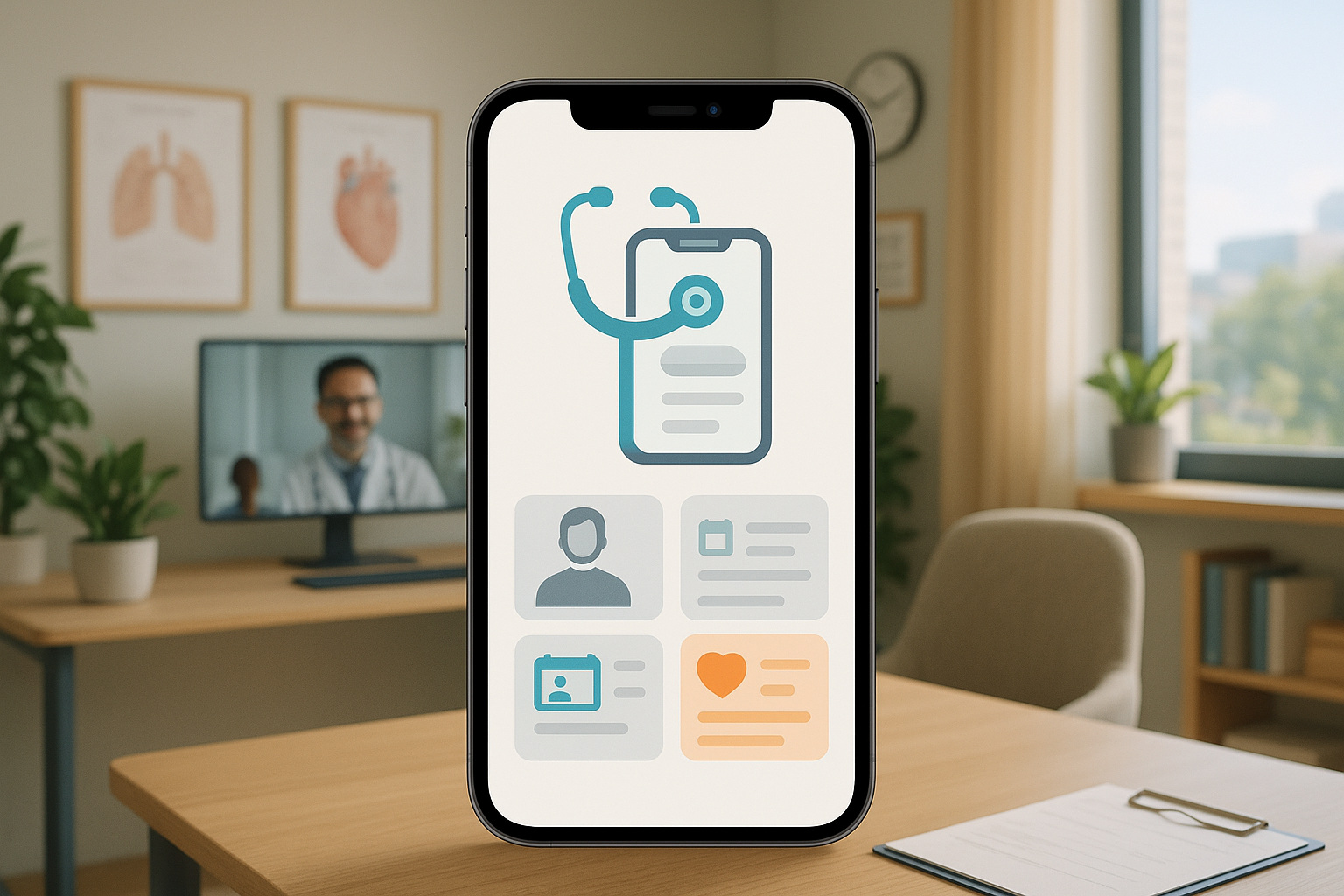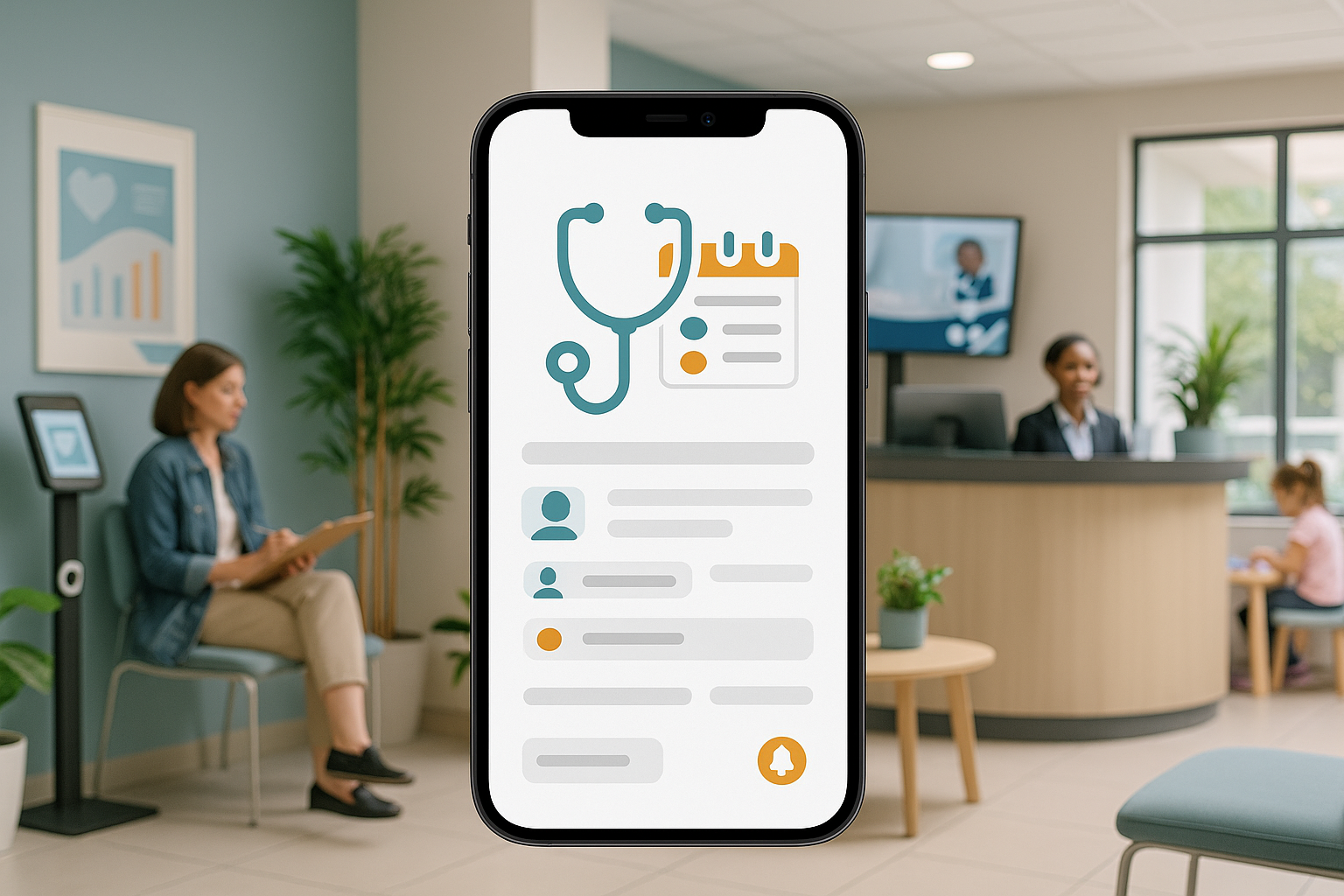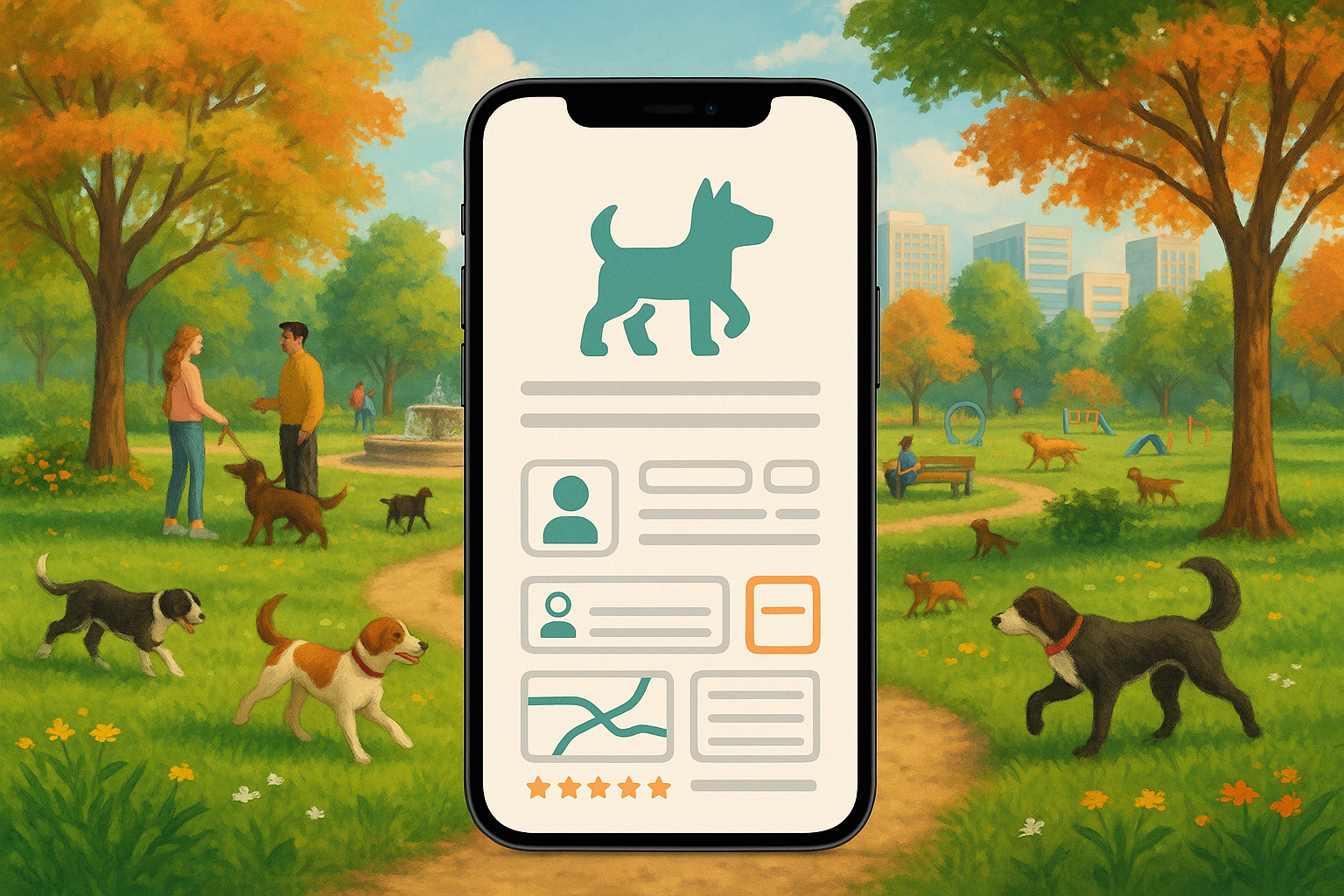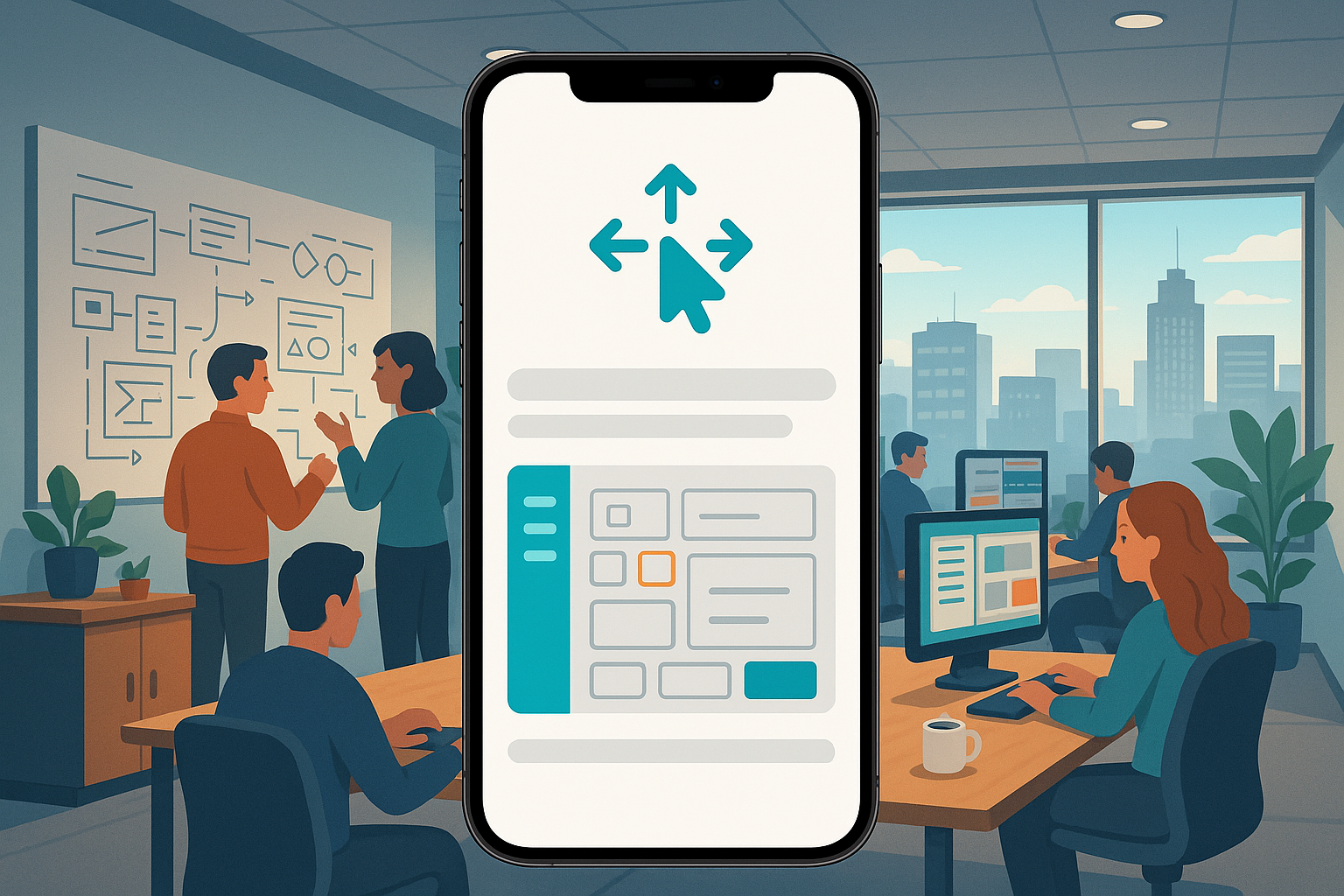The landscape of healthcare is undergoing a radical transformation, accelerated by digital innovation. Patients now expect the same level of convenience from their healthcare providers that they receive from retail or banking. This has catapulted doctor consultation apps from a niche convenience to an essential component of modern medical practice. However, building such an application is a formidable undertaking. The path is fraught with challenges, from navigating the labyrinthine corridors of regulatory compliance like HIPAA and GDPR to engineering secure, reliable, and scalable technical infrastructure.
Developing a doctor consultation app is not merely about creating a video chat platform; it’s about building a trusted digital extension of a healthcare practice. It requires a deep understanding of clinical workflows, stringent data security protocols, and seamless integration with existing healthcare systems like Electronic Health Records (EHRs). For many organizations, attempting this in-house leads to spiraling costs, extended timelines, and compliance pitfalls.
This comprehensive guide will illuminate the path to successful doctor consultation app development. We will explore what these apps entail, the significant hurdles in their development, the different types of applications, and a detailed breakdown of the associated costs. We will also review the top development companies that specialize in this complex field. At MetaCTO, we leverage our 20 years of experience and AI-enabled development processes to help our partners build, grow, and monetize sophisticated mobile applications. We understand these challenges intimately and partner with you to transform your vision into a market-ready app that is secure, compliant, and poised for growth.
What is a Doctor Consultation App?
A doctor consultation app is a mobile or web application that facilitates remote medical appointments and communication between patients and healthcare professionals. These platforms, often referred to as telemedicine or telehealth apps, use technology—primarily video calls and secure messaging—to deliver healthcare services from a distance. The core purpose is to bridge the physical gap between patient and provider, making healthcare more accessible, convenient, and efficient.
During the coronavirus pandemic, these applications saw a surge in popularity as they provided a safe and effective way to conduct consultations while adhering to social distancing restrictions. Platforms like Teladoc, Amwell, and MDlive became household names, demonstrating the model’s viability and immense value. They offer users virtually 24/7 assistance from experienced professionals, breaking down traditional barriers to care such as geography, mobility issues, and inconvenient clinic hours.
The functionality of these apps goes beyond simple video conferencing. A well-designed doctor consultation app allows physicians to conduct thorough phone and video consultations, which can lead to a faster and more accurate diagnostic process. They often include features for e-prescribing, where doctors can send prescriptions directly to a patient’s pharmacy, and integration with a patient’s health records. For patients, these apps provide a centralized hub for managing their health—scheduling appointments, accessing consultation histories, and communicating securely with their care team. Even pharmacists can use such apps to provide online help and medication counseling.
In essence, a doctor consultation app digitizes the traditional clinic visit, creating a secure and efficient virtual environment for healthcare delivery.
Reasons It Is Difficult to Develop a Doctor Consultation App In-House
Embarking on the development of a doctor consultation app without an experienced partner is a journey laden with significant and often underestimated challenges. While building an in-house team may seem to offer more control, the specific, high-stakes requirements of healthcare technology create a uniquely difficult environment.
Navigating Complex Regulatory Compliance
This is arguably the most critical and daunting challenge. Healthcare apps that handle Protected Health Information (PHI) are subject to stringent regulations.
- HIPAA and GDPR: In the United States, the Health Insurance Portability and Accountability Act (HIPAA) sets the standard for protecting sensitive patient data. In Europe, the General Data Protection Regulation (GDPR) imposes its own strict rules. Navigating these complex legal frameworks is overwhelming. A misstep doesn’t just lead to a poor user experience; it can result in severe financial penalties, legal action, and irreparable damage to your reputation.
- Business Associate Agreements: Under HIPAA, an app developer can be considered a “business associate” of a healthcare provider. This legal status comes with direct liability for protecting PHI. Understanding and fulfilling these obligations requires deep legal and technical expertise.
- Advanced Security Protocols: Meeting these regulatory standards is not a simple checkbox exercise. It necessitates implementing advanced security protocols, including end-to-end data encryption (both in transit and at rest), secure user logins with multi-factor authentication, and comprehensive audit trails to track all access to PHI. These features are non-negotiable and contribute significantly to the development budget and complexity.
Ensuring Robust Data Privacy and Security
Beyond regulatory mandates, the trust of your users hinges on your ability to protect their most sensitive information. With patient records, prescription details, and private consultation histories stored digitally, cybersecurity must be a primary focus. Building a secure product requires:
- Strong Encryption: Implementing powerful encryption for all user data is a baseline requirement.
- Secure Architecture: The app’s entire architecture must be designed with security in mind, from the frontend to the backend servers and databases. This includes preventing common vulnerabilities and planning for threat detection and response.
- User Data Security: A single data breach can destroy patient trust and the credibility of the platform. Building a secure, scalable, and trusted product is a foundational challenge.
Overcoming Technical Complexity and Integrations
A doctor consultation app is far more than a sleek user interface. Its backend functionality is complex and requires specialized engineering skills.
- Reliable Video Call Performance: The core feature—the video consultation—must be flawless. Poor internet connectivity on the user’s end can lead to dropped calls or lagging video, severely impacting the patient experience and potentially the accuracy of a diagnosis. The system must be optimized for low-bandwidth conditions and ensure high-quality, stable video and audio.
- EHR/EMR Integration: To be truly useful, a telehealth app must integrate seamlessly with existing Electronic Health Record (EHR) or Electronic Medical Record (EMR) systems. This is a massive technical hurdle. Different healthcare organizations use disparate, often legacy, systems that don’t “speak the same language.” This leads to challenges in:
- Data Compatibility: Ensuring data flows correctly without mismatches or information loss requires expertise in interoperability standards like HL7 and FHIR.
- Real-Time Synchronization: Notes and data from a virtual visit must update in the EHR immediately. Delays can lead to clinicians working with outdated information. Building robust APIs and middleware to support near real-time data exchange is resource-intensive.
- Other Third-Party Integrations: Integrating payment systems, e-prescription services, and medical kiosks introduces further complexity and cost.
Doctor Onboarding and Verification
The credibility of your platform is entirely dependent on the quality and legitimacy of the healthcare professionals using it. Ensuring that only licensed and qualified doctors, nurses, and specialists are listed is a critical operational and technical challenge. This involves building a rigorous verification workflow that can check credentials against state licensing boards and other databases, a process that must be both secure and efficient.
Building User Trust and Gaining Adoption
In a digital healthcare setting, gaining and retaining user trust requires more than just a good-looking app. Patients must feel confident that their data is secure and that the care they receive is of high quality. Clinicians must find the tool easy to use and a genuine enhancement to their workflow, not an administrative burden. Clinician resistance to new tools that disrupt familiar processes is a common obstacle. Overcoming this requires thoughtful UX/UI design, extensive user testing, and a platform that is demonstrably reliable and efficient.
Hiring an expert development agency like MetaCTO mitigates these risks. Our team has the specialized background in building secure, scalable, and compliant healthcare apps. We bring the knowledge that accelerates timelines, ensures impeccable compliance, and ultimately delivers a superior product without the exorbitant cost and steep learning curve of building an in-house team from scratch.
Different Types of Doctor Consultation Apps
The world of telemedicine is not one-size-fits-all. Doctor consultation applications can be tailored to meet the specific needs of different medical fields and clinical workflows. Understanding these variations is key to developing a product that effectively serves its target audience.
Telemedicine for Primary Care
This is the most common type of doctor consultation app, designed for general health concerns, routine check-ups, and managing common illnesses. These applications provide a virtual front door to the healthcare system, offering key functionality for appointment scheduling, video consultations, secure messaging, and prescription refills.
Specialized Telemedicine Applications
Many apps focus on specific medical disciplines, offering features and workflows tailored to the needs of that specialty.
- Telemedicine for Pediatrics: These apps are designed to address the unique needs of caring for children, often including features for parental accounts, growth tracking, and consultations for common childhood illnesses.
- Neurology Telemedicine: This includes solutions for telestroke and general neurology telehealth. These platforms are critical for providing rapid consultations for stroke patients in remote or underserved areas and for ongoing management of chronic neurological conditions. They often have specialized features and integrations for sharing diagnostic imaging and conducting virtual neurological exams.
- Telemedicine for Dermatology: Dermatology is particularly well-suited for telemedicine, as many conditions can be diagnosed visually. These apps typically focus on a “store-and-forward” model, where patients can upload high-quality images of their skin condition for a dermatologist to review asynchronously, in addition to live video consultations.
Telemedicine-enabled EHRs
Instead of a standalone app, this model integrates telemedicine functionality directly into an existing Electronic Health Record (EHR) system. This approach ensures seamless data flow and a unified workflow for clinicians. These systems are often enhanced with innovative features like:
- Voice recognition for hands-free note-taking.
- Smartpen features that digitize handwritten notes.
- Clinical text analysis to extract structured data from unstructured notes.
Virtual Hospitals
This is one of the most advanced types of telemedicine. A virtual hospital provides comprehensive, acute-level care to patients in their homes. These systems rely on a complex architecture of remote patient monitoring devices, constant data streaming, and a dedicated care team that manages patients remotely. They have key features, integrations, and architectural considerations to support a wide range of clinical services that would traditionally require an inpatient stay.
Cost Estimate for Developing a Doctor Consultation App
The cost of developing a doctor on-demand app can vary dramatically, with estimates ranging from $40,000 to over $350,000. This wide range is due to a host of factors that directly influence the project’s scope, complexity, and timeline. Understanding these variables is crucial for budgeting effectively and making informed decisions. The fundamental equation is:
Total Development Cost = Total Development Hours × Hourly Rate of Developers
Let’s break down the key factors that determine the final cost.
App Complexity and Feature Set
The number and sophistication of features are the primary drivers of cost. Apps are generally categorized into three tiers of complexity:
| Complexity Level | Estimated Cost Range | Description |
|---|---|---|
| Basic | $50,000 – $90,000 | Includes core features like user registration, doctor profiles, search functionality, scheduling, and basic video/text chat. Typically for a single platform with a standard UI. |
| Moderate | $90,000 – $150,000 | Adds more advanced features such as e-prescribing, EHR/EMR integration, online payment gateways, and a custom UI/UX design. Development may include support for multiple platforms (iOS, Android). |
| Advanced | $150,000 – $350,000+ | A feature-rich platform with all moderate features plus advanced capabilities like AI-driven diagnostics, real-time video consultations, remote patient monitoring device integration, and robust analytics dashboards. This level requires the highest level of security, compliance, and scalability. |
Development Team Location and Structure
The hourly rate of developers varies significantly based on their geographic location and how you structure your team.
Cost by Team Structure:
| Team Type | Estimated Cost | Pros & Cons |
|---|---|---|
| In-House Team | $150,000 - $180,000+ | Pros: Maximum control. Cons: Very high cost (salaries, benefits, overhead), slow to assemble. |
| Local App Development Company | $200,000 - $230,000 | Pros: Easier communication. Cons: Typically the most expensive option. |
| Outsourced Dev Company | $65,000 - $80,000 | Pros: Best balance of cost and quality, access to specialized talent. Cons: Requires good project management. |
| Freelancers | $35,000 - $40,000 | Pros: Lowest initial cost. Cons: High risk, potential for communication and quality issues, lacks accountability. |
Cost by Developer Location:
| Region | Estimated Cost Range |
|---|---|
| USA | $190,000 - $250,000 |
| UK | $190,000 - $200,000 |
| Western Europe | $140,000 - $160,000 |
| Eastern Europe | $70,000 - $100,000 |
| Asia | $50,000 - $300,000 |
Outsourcing development to experienced teams in cost-effective regions like Eastern Europe can provide high-quality results at a fraction of the cost of hiring in the US or Western Europe.
Other Significant Cost Factors
- Platform Choice: Building separate native apps for iOS and Android is more expensive than using a cross-platform framework like React Native or Flutter, which can reduce development time and cost.
- UI/UX Design: A custom, highly polished user experience involves more hours for research, design, and testing than using ready-made templates, but it is critical for user adoption and retention.
- Integrations: Integrating with third-party systems like EHRs, payment gateways, and e-prescription services introduces additional development costs and potential licensing fees.
- Regulatory Compliance: Ensuring adherence to HIPAA and GDPR requires specialized expertise and advanced security measures, which contribute significantly to the total budget.
- Ongoing Maintenance and Hidden Costs: The initial development cost is not the final expense. Budgeting for long-term maintenance is non-negotiable. These recurring costs include:
- Server hosting and cloud infrastructure.
- Bug fixes and software updates.
- Cybersecurity measures and data backups.
- Marketing and user acquisition.
- Ongoing legal and compliance audits.
Developing a Rapid MVP (Minimum Viable Product) is a strategic way to start. An MVP includes the core features necessary to launch and test the concept in the market. This approach, typically costing around $40,000 or more, allows you to gather user feedback and validate your idea before committing to a full-scale, feature-rich application.
Top Doctor Consultation App Development Companies
Choosing the right development partner is the single most important decision you will make. The best firms offer more than just coding; they provide strategic guidance, deep industry expertise, and a proven track record in the complex healthcare domain.
1. MetaCTO
At MetaCTO, we specialize in transforming ambitious ideas into successful, market-leading mobile apps. With over 20 years of experience and more than 120 successful projects, we are experts in navigating the complexities of healthcare app development. We position ourselves not just as developers, but as deep technical partners who guide you through every step of the process, from concept to launch and beyond.
Integrating robust doctor consultation features into a mobile app is fraught with the challenges we’ve discussed: ensuring HIPAA compliance, building scalable and secure backend infrastructure, and designing an intuitive user experience for both patients and clinicians. This is where our expertise shines. We handle the entire process—design, build, and launch—making it painless for you. Our AI-enabled development process and our 90-day MVP service allow you to go to market faster, test your concept with real users, and secure funding, all while keeping costs and timelines under control.
We believe in aligning technology strategy with your business goals. Whether you’re a startup looking to launch your first product or an established enterprise seeking to innovate, we provide the technical roadmap to increase profit and valuation. Our focus on secure, scalable, and future-proof architecture ensures your app can evolve with your business, handle thousands of users, and remain competitive in a fast-moving market.
| Company Size | 1-50 employees |
|---|---|
| Hourly Rate | Varies by engagement |
| Locations | USA |
| Core Services | - AI-Enabled Mobile App Development - Rapid MVP Development - Fractional CTO Services - App Growth & Monetization - Full-Stack Development - Project Rescue |
Other Leading Development Companies
Here is a look at other top firms in the healthcare app development space, based on their recognized strengths and services.
| Company | Company Size | Hourly Rate | Locations | Key Strengths & Services |
|---|---|---|---|---|
| Quokka Labs | 100-150 | $50-$100 | USA, India, Netherlands | Strong portfolio of HIPAA-compliant and SaMD-ready solutions. Focus on security, scalability, and rapid MVP delivery (6-8 weeks). |
| WillowTree | 500-1000 | $150-$200 | USA, India, Canada, Brazil | Top player in mobile strategy and user experience. Builds smart, safe, and reliable apps with deep knowledge of healthcare rules. |
| ArcTouch | 100-250 | $100-$150 | USA, Europe, Brazil, Canada | Shines in creating smooth, easy-to-use apps in strictly regulated areas. Expertise in SaMD, remote patient monitoring, and wearable integration. |
| Y Media Labs | 250-500 | $150-$250 | USA, India | Excels at creating apps that feel easy and helpful. Mixes smart planning, creative design, and solid coding. Expertise in AI-powered tools and interoperability. |
| Rightpoint | 500-1000 | $125-$175 | USA, India, Europe | A digital consultancy focused on patient-first experiences. Known for excellent clinical UX/UI design and boosting patient satisfaction. |
| Toptal | Marketplace | $80-$200 | USA | A top-notch talent marketplace for finding skilled, pre-screened freelance developers specializing in healthcare tech, SaMD, and HIPAA compliance. |
| Cleveroad | 100-200 | $40-$80 | USA, Norway | Knows its stuff with HIPAA and GDPR compliance. Great at turning ideas into real apps fast while keeping everything safe and by the book. |
| Zco Corporation | 250-500 | $75-$125 | USA | Strong reputation for creating high-performance apps that can handle growth and thousands of users smoothly while maintaining security. |
| Softermii | 50-150 | $40-$70 | USA, Ireland, Poland, UK, Ukraine | Shines with strong backend engineering and DevOps. Specializes in secure, fast solutions for telemedicine and real-time communication. |
| Intellectsoft | 500-1000 | $150-$250 | USA | Known for creating robust enterprise-grade software for large hospital groups and pharmaceutical companies. Expertise in AI, blockchain, and clinical data management. |
| Dogtown Media | 50-100 | $100-$150 | Canada | Helps healthcare startups move faster by mixing strong knowledge of regulations with quick, agile startup methodologies. |
Conclusion
The journey to developing a successful doctor consultation app is complex, but the destination is transformative for both patients and providers. As we’ve explored, the process involves much more than software development; it requires a strategic approach to navigating regulatory compliance, ensuring airtight security, managing intricate integrations, and containing costs. From understanding the different types of telemedicine platforms to carefully selecting a development partner, every decision has a profound impact on the final product’s success.
The challenges are significant, from the high costs and specialized expertise required to the critical need for user trust and flawless technical performance. However, these obstacles are not insurmountable. By partnering with a firm that possesses deep experience in the healthcare domain, you can de-risk the entire process and accelerate your path to market.
At MetaCTO, we live and breathe this work. We provide the expert guidance and technical horsepower to build, launch, and grow a mobile app that is better than you could have imagined. We help you avoid the common pitfalls and build a secure, compliant, and engaging platform that truly makes a difference.
If you’re ready to bring your vision for a doctor consultation app to life, let’s build it the right way, from day one.
Talk with an expert at MetaCTO to integrate powerful doctor consultation features into your product or build your app from the ground up.






